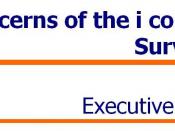Reports are factual documents, prepared to fulfil the needs of decision makers
in organisations. They are therefore used for a variety of purposes and can be
short (such as progress reports) or long (such as investigative reports or the
annual report), formal or informal, routine, occasional or specially
commissioned. Before any report can be prepared, decisions about the exact
nature and purpose of the report, the recipient, distribution and likely reaction
all need to be addressed because these factors will determine the structure,
length and style (i.e. the degree of formality) of the report.
There are four main steps in the preparation of a report:
*Define the issue(s) - this helps to identify the information that will be
needed to deal with the main points by asking the right questions and
clarifying the exact purpose of the report.
*Identify the main issues - this will break up the problem into specifics that
can be easier to analyse and also help to develop a logical structure to the
investigation.
*Produce a plan of action - the steps you need to take and the sources to be
used in conducting the research.
*Draw conclusions and make recommendations based on the facts and
findings, which will aid the decision-maker.
Structure
1. The title page (which may be preceded by an additional page with just the
title of the report) shows the following:
(a) The title of the report
(b) The name, title and address of the person or organisation that
prepared the report
(c) The submission date of the report
(d) The name of the person or organisation to whom the report is
Submitted
2. Letters of authorisation and acceptance ('for the record') which directed the
report to you or your organisation and any subsequent reply may be
included.
3. Letter of...


